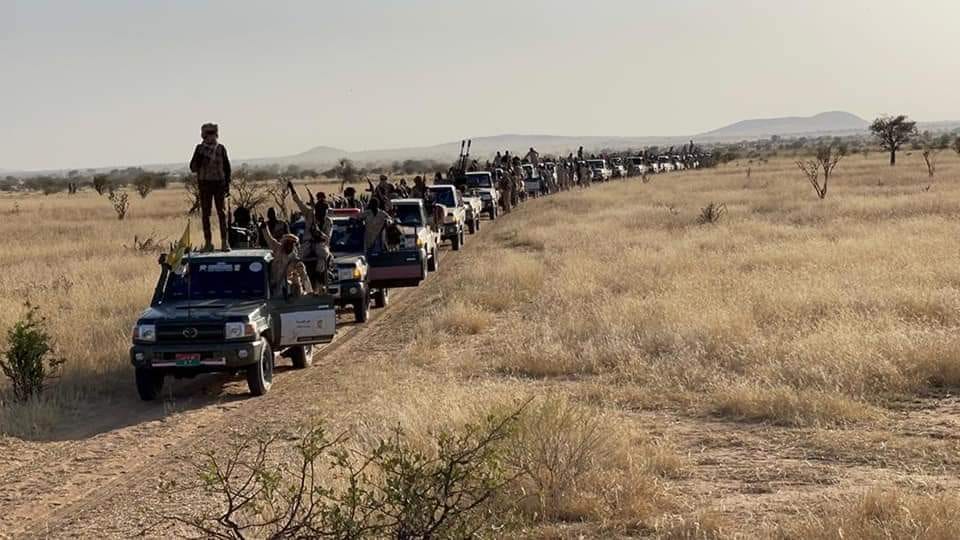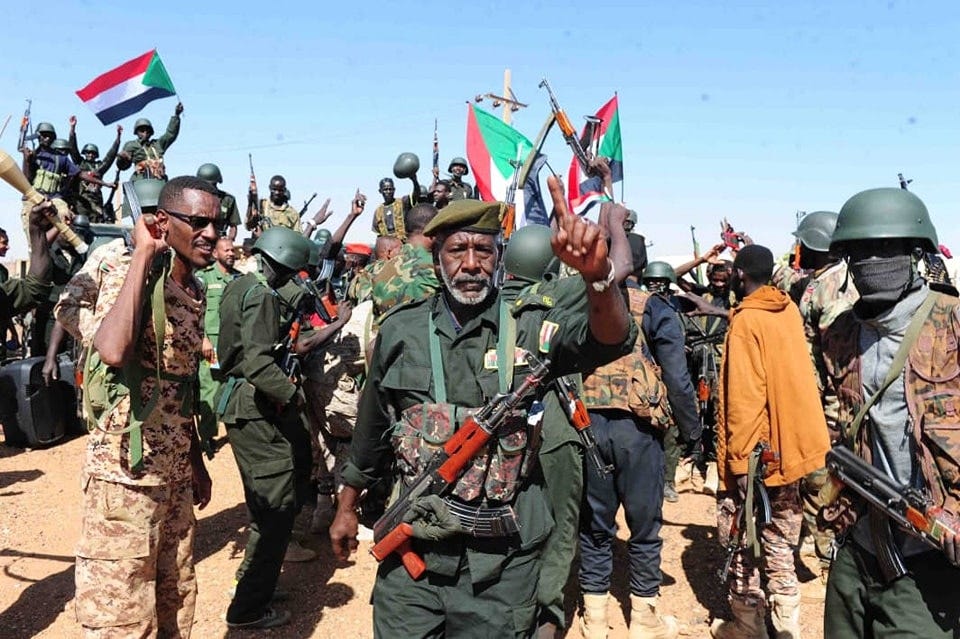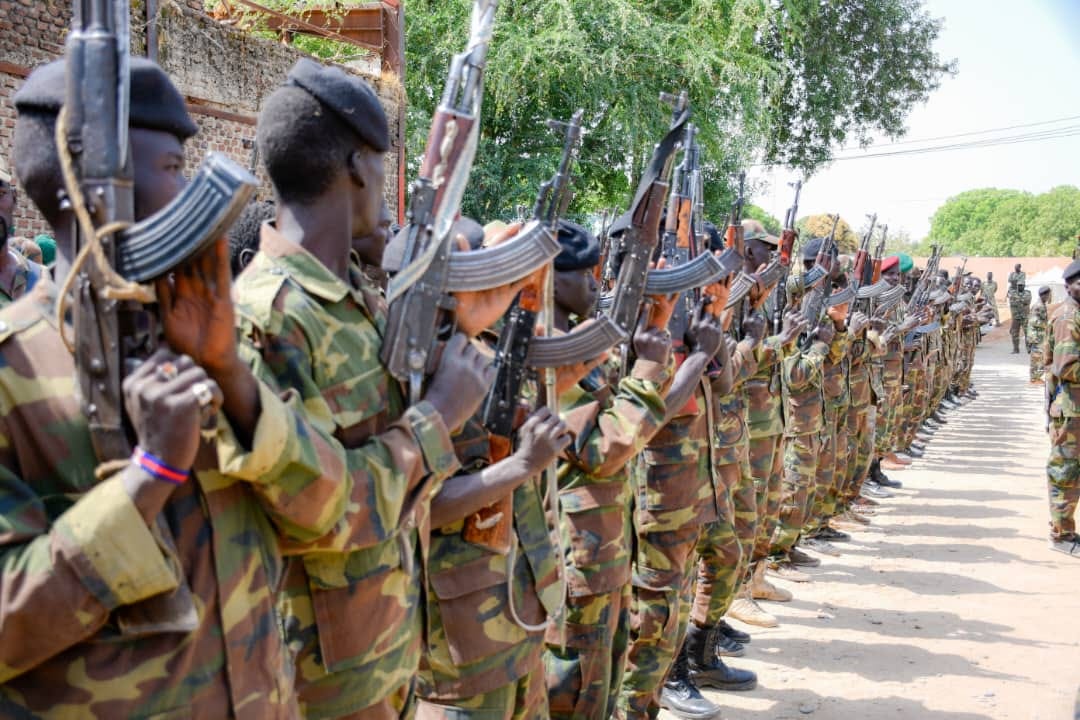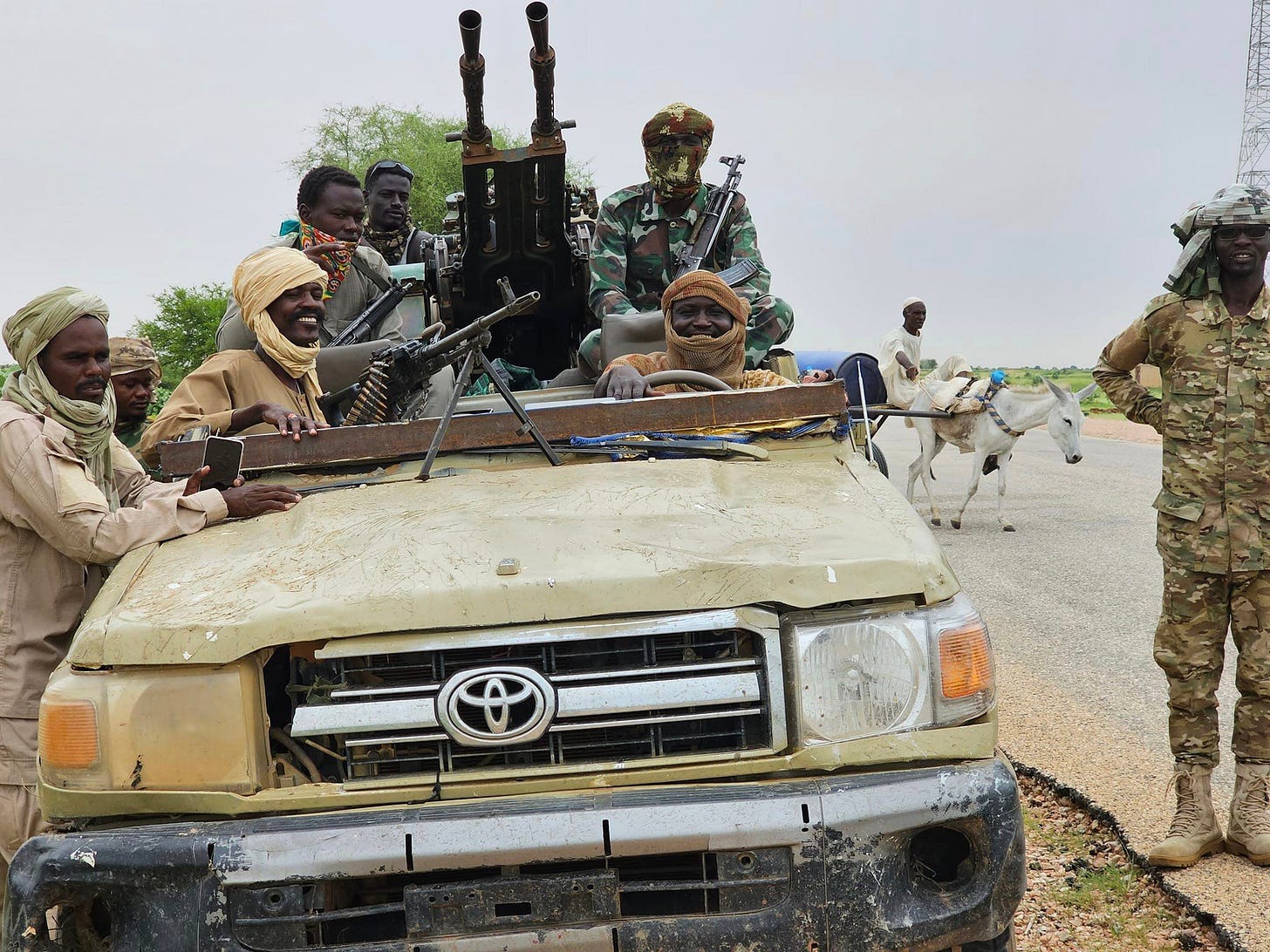Map of the Areas of Control in Sudan
Zones of military control as of February 1, 2024
Military control in Sudan is currently divided between the Sudan Armed Forces and a formerly allied paramilitary, the Rapid Support Forces, which mutinied in April last year, as well as several less powerful armed groups that originated in prior civil wars.
This map reflects recent military developments in several areas.
The Rapid Support Forces (RSF), which hail from the western Darfur region, have eliminated the Sudan Armed Forces throughout Darfur, except the North Darfur capital El Fasher, which is also a stronghold of neutral ex-rebel groups.
RSF control nearly all the capital Khartoum, which lies at the confluence of the Blue Nile and White Nile rivers. Furthermore, in December they extended their control south from Khartoum into most of Al Jezira State, the agricultural heartland of Sudan.
The rapid conquest of Al Jezira, including the state capital Wad Madani, shocked the Sudanese public and pushed the frontline south by about 150 km, toward the borders of Sennar and Gezira States.
The fall of Jebel Aulia in November, a city in southern Khartoum State, had paved the way for that invasion, while also putting the RSF within striking distance of key cities in White Nile State, including Ad Douiem, Kosti, and Rabak.
The Sudan Armed Forces (SAF)—which includes the army, air force, navy, and air defense force—retain control in eastern and northern parts of the country. Their strongholds include River Nile (the home state of the former dictator, Omar al-Bashir), Northern State, Gedaref, Kassala, and Red Sea State, which is the seat of the new de facto capital Port Sudan. SAF also control about half of Omdurman, Khartoum’s sister city, where they are currently waging an offensive.
Recently, the army lost ground in Kordofan, a vast plains region that lies between the Nile Valley and Darfur. The RSF move freely through the region between Darfur and Khartoum, and they overran or cut off several towns and outposts. But the army still have large garrisons at Kadugli and El Obeid, and at the oilfields around Abyei.
Fighting alongside SAF are the General Intelligence Service (which has a paramilitary wing), the Central Reserve Police (a paramilitary), civilian volunteers known ‘Popular Resistance,’ and the faction of the Sudan People’s Liberation Army (SPLA-N) led by Malik Agar, based in Blue Nile State at ad-Damazin.
Another SPLA-North faction headed by Abdelaziz al-Hilu controls large parts of the Nuba Mountains region in South Kordofan (Kauda, Heiban, etc). The rebellion in this area pre-dates the current SAF-RSF conflict. Al-Hilu’s troops recently were reported to have participated in fighting in Dilling against the RSF, in cooperation with SAF. However, in general they view both SAF and RSF as rivals.
Northern parts of Darfur are under control of a ‘Joint Force’ of the Sudan Liberation Army (Minni Minawi faction) the Justice and Equality Movement (Jibril Ibrahim faction), and other former rebels who signed a peace agreement with the government in 2020. These groups are politically divided: some nominally abandoned their neutrality and said they would support the army, while others remained neutral.
Despite their differences at the political level, nearly all of the former Darfur rebels have stayed out of the fighting at the field level. RSF and the former Darfur rebels coexist peacefully in many areas, and field commanders coordinate to avoid clashes.
Humanitarians have warned of worsening hunger and disease outbreaks if the fighting continues, as well as a “learning catastrophe” due to millions of children being out of school indefinitely. After just ten months of conflict, Sudan is experiencing mass population displacement at a scale seen nowhere else in the world.
This is a guest post by Thomas van Linge, a freelance journalist and researcher who previously mapped conflicts in Syria, Ethiopia, and Myanmar.
You can support his work here.







